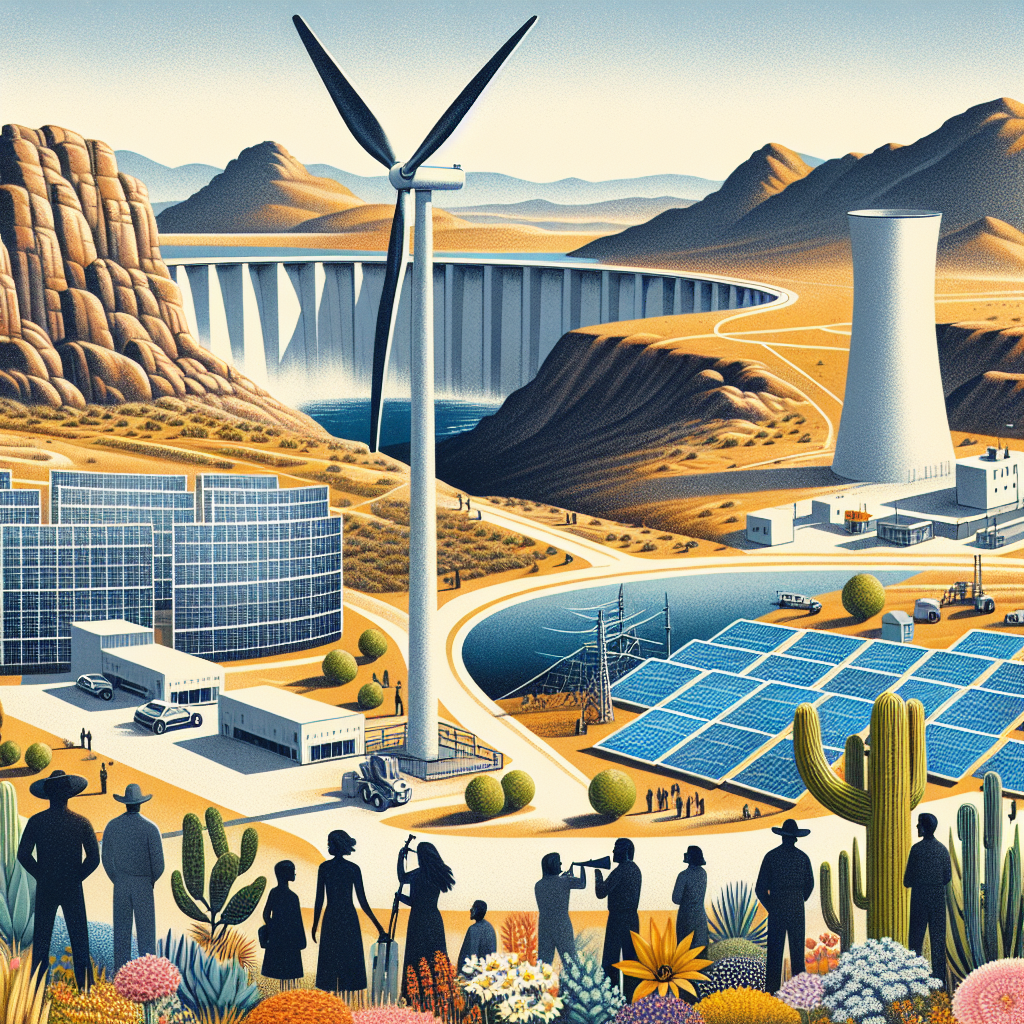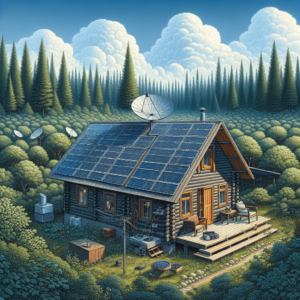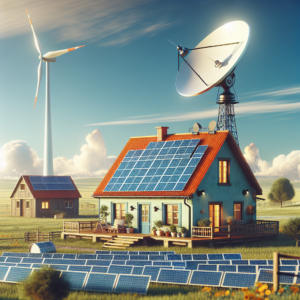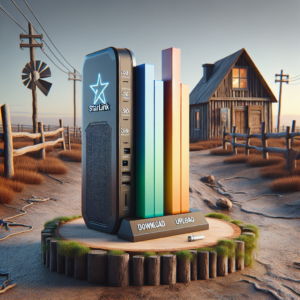
Solar panels have an average efficiency of 20% but only generate power during sunlight hours.
Wind turbines can produce energy at any time and are about 50% efficient, but require more space and maintenance.
Location greatly affects the viability of wind or solar power, with certain environments favoring one over the other.
Wind power has a higher initial cost but may offer greater long-term energy potential in suitable locations.
Combining both solar and wind power can provide a more consistent and reliable off-grid energy supply.
Harvesting the Elements: Wind and Solar Energy Fundamentals
Let’s talk about living off-grid and the energy sources that can make this dream a reality. We’ve got two main contenders in the renewable energy ring: wind turbines and solar panels. Each has its own strengths and quirks, and understanding them is the first step to deciding which one (or a mix of both) could be your off-grid ally.
The Basics of Solar Power
Solar power is like that reliable friend who shows up every day without fail, well, as long as it’s daytime. Here’s the scoop: solar panels convert sunlight directly into electricity using photovoltaic cells. These cells are the real heroes, taking in photons from sunlight and turning them into the electric current. And guess what? Solar panels have come a long way. They’re now hitting a sweet spot with an efficiency of around 20%, meaning they convert about one-fifth of the solar energy they catch into electricity.
But there’s a catch – solar panels need the sun. So when it’s cloudy or night-time, they’re off duty. That’s why having a good battery system to store all that sunny goodness is crucial for those less-than-sunny times.
Understanding Wind Energy Dynamics
Wind energy is like the wild card of renewable energy. It doesn’t matter if it’s day or night; if the wind is blowing, you’ve got power. Wind turbines capture the wind’s kinetic energy and convert it into electricity. Think of them as giant fans in reverse – instead of using electricity to make wind, they use wind to make electricity.
Wind turbines can be real powerhouses, potentially converting about 50% of the wind’s energy that passes through them into electricity. That’s a big deal compared to solar panels. But there’s a twist – they need the right location with plenty of wind and enough space to spread their wings, so to speak.
Choosing Your Champion: Wind Turbines
Advantages of Harnessing Wind
Wind turbines are like the titans of the off-grid world. Here’s why they might just be your energy hero:
They can generate power 24/7, as long as the wind is blowing.
They’re more efficient than solar panels, which means they can potentially give you more bang for your buck.
Wind is a free and endless resource (no worries about running out of wind anytime soon).
- But before you go all-in on wind, let’s talk about some things you need to consider.
Considerations for Wind Turbine Installation
Wind turbines aren’t just “set it and forget it” gadgets. They need the right environment to thrive. Here’s what you need to think about:
Do you have enough space? Wind turbines like their personal space, and they need to be placed far enough apart to work efficiently.
How’s the wind? You’ll need a consistent wind speed to get the most out of your turbines.
Local regulations might have a say in whether you can install a turbine, so check those out first.
And remember, the initial cost can be higher than solar panels, but the potential energy payoff could be worth it.
Optimizing Wind Turbine Performance
Getting the most out of your wind turbine isn’t rocket science, but it does take some know-how. You want to place your turbine high enough to catch the good winds but not so high that it’s playing in the jet stream. And maintenance is key – keeping those blades spinning smoothly means regular check-ups.
Maximizing Solar Energy Capture
So, how do you make the most of your solar panels? It’s all about positioning and care. You want to angle those panels just right to catch as many sunbeams as possible. That means pointing them towards the equator and tilting them based on your latitude. And don’t forget to keep them clean! A dusty panel is a less efficient panel.
Where You Live Matters: Location-Specific Strategies

Where you plant your roots can make a big difference in your off-grid energy game. Both wind and solar power depend heavily on your local climate and geography. So, let’s dive into what makes a spot perfect for harvesting the wind or soaking up the sun.
Best Environments for Wind Turbines
Wind turbines love open spaces where the wind roams free. If you’re near the coast or on a hilltop, you’re likely to catch those breezy benefits. Generally, you’ll want to look for places with an average wind speed of at least 12 miles per hour. But remember, the higher you go, the windier it gets, so a bit of altitude can be a good thing for wind turbines.
Ideal Conditions for Solar Panel Efficiency
For solar panels, it’s all about the sun exposure. Places with clear skies and plenty of sunshine, like the desert Southwest, are solar goldmines. But even in less sunny spots, you can still get good results with the right setup. It’s about maximizing those daylight hours, so even a place with a decent amount of sun can be a contender for solar power.
Costs and Incentives: Financial Considerations
Let’s talk turkey – or rather, let’s talk about the costs and savings you’re looking at with wind versus solar power. Both have their upfront costs, but they also come with some sweet incentives that can help lighten the load on your wallet.
Breaking Down the Budget: Wind vs. Solar
Wind turbines might have a higher upfront cost – think thousands of dollars – but they can pay off big time if you’ve got the wind to back them up. On the flip side, solar panels are generally cheaper to start with. You’re looking at a few hundred to a couple thousand per panel, depending on the type and efficiency. But remember, you’ll likely need a bunch of them to power your whole home.
Unlocking Savings: Tax Credits and Rebates
Here’s some good news: both wind and solar energy systems can qualify for federal tax credits, and sometimes local rebates too. This can shave a significant chunk off the initial costs. Always check the latest tax laws and incentives – they can be a game-changer for your off-grid budget.
Maintenance and Durability: Longevity of Your Off-Grid System
Your off-grid system isn’t just a set-it-and-forget-it deal. Both wind turbines and solar panels need some TLC to keep them running smoothly for the long haul.
Caring for Your Wind Turbines
Wind turbines may be tough, but they’re not invincible. They need regular maintenance checks to ensure everything’s spinning as it should be. Think of it like a car – you wouldn’t skip your oil change, right? Same goes for your turbine – a little upkeep goes a long way.
Keeping Solar Panels at Peak Performance
Solar panels are a bit more low-maintenance than wind turbines, but they still need some love. Keeping them clean and free of debris is key. And while they’re pretty sturdy, you’ll want to check for any damage after severe weather, just to be safe.
Powering Through the Night: Energy Storage Solutions
So you’ve got your wind or solar power rocking during the day, but what about when the sun sets or the wind dies down? That’s where energy storage comes into play.
Battery Banks for Wind Energy
Battery banks are like your energy savings account. When your wind turbines are producing more power than you can use, you store it away for a not-so-windy day. It’s all about having the right size battery bank to meet your needs.
Solar Storage Technologies
Solar power storage works much the same way. With a solid battery system, you can keep that sunny day energy ready for use whenever you need it, day or night. The trick is to get a battery bank that matches your energy use – too small and you’ll run out, too big and you’re wasting potential.
Now, let’s marvel at the real-life applications of these technologies, exploring how they’ve transformed lives and landscapes.
Real-Life Off-Grid Marvels: Case Studies
Imagine a world where your home powers itself, where you’re the master of your own energy universe. This isn’t just a fantasy; for some, it’s a reality. Let’s look at a few stories of those who’ve embraced off-grid living with open arms and how they’ve made it work with wind and solar power.
Wind-Powered Wonders: Stories from the Field
Take, for example, a family living in the windy plains of Texas. They installed a small wind turbine on their property, and it’s been a game-changer. Despite the initial investment, their energy bills have plummeted, and they’re even able to sell excess power back to the grid. Their story is a testament to the power of the wind when harnessed in the right conditions.
Sun-Soaked Success: Solar Power in Action
Then there’s the sun-drenched home in California, where solar panels sprawl across the rooftop, soaking up the golden rays. This family chose solar because of the state’s generous incentives and the abundant sunshine. They’ve cut their energy costs to a fraction of what they once were and have the peace of mind that comes with energy independence.
These stories aren’t just inspiring; they’re proof that with the right setup, off-grid living isn’t just possible—it’s flourishing.
FAQs: Your Questions Answered
You’ve got questions; I’ve got answers. Let’s clear up some common queries about off-grid living with wind and solar power.
Can I Combine Wind and Solar Power?
Absolutely! In fact, combining wind and solar can give you the best of both worlds: the consistency of wind power and the efficiency of solar energy. This dynamic duo can keep your off-grid home powered up more reliably than either could alone.
What Happens When There’s No Wind or Sun?
That’s where your energy storage system comes into play. With a well-sized battery bank, you can store excess energy for those times when the wind isn’t blowing, and the sun isn’t shining. It’s all about planning and having a backup plan for your backup plan.
How Much Off-Grid Power Do I Really Need?
It all boils down to your energy usage. Start by calculating your daily power needs, then design your wind or solar system (or both!) to meet those needs. It’s a personalized approach, as everyone’s energy habits are different.
Are There Off-Grid Solutions for Urban Homes?
Yes, even urban dwellers can get in on the off-grid action. Solar panels are particularly suited to city living, as they can easily be installed on rooftops. Wind turbines might be trickier due to space constraints, but small, vertical-axis turbines could be a viable option for some.
What’s the Environmental Impact of Off-Grid Systems?
Going off-grid with wind and solar power significantly reduces your carbon footprint. These clean energy sources don’t produce greenhouse gases or air pollution, making them a win for you and the planet.







